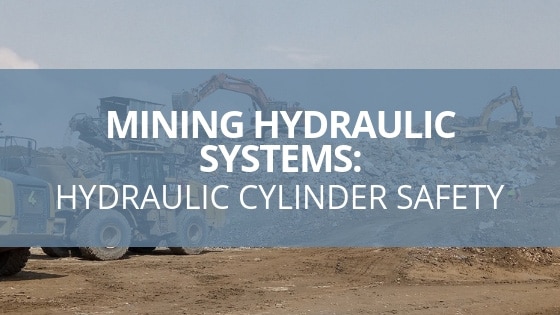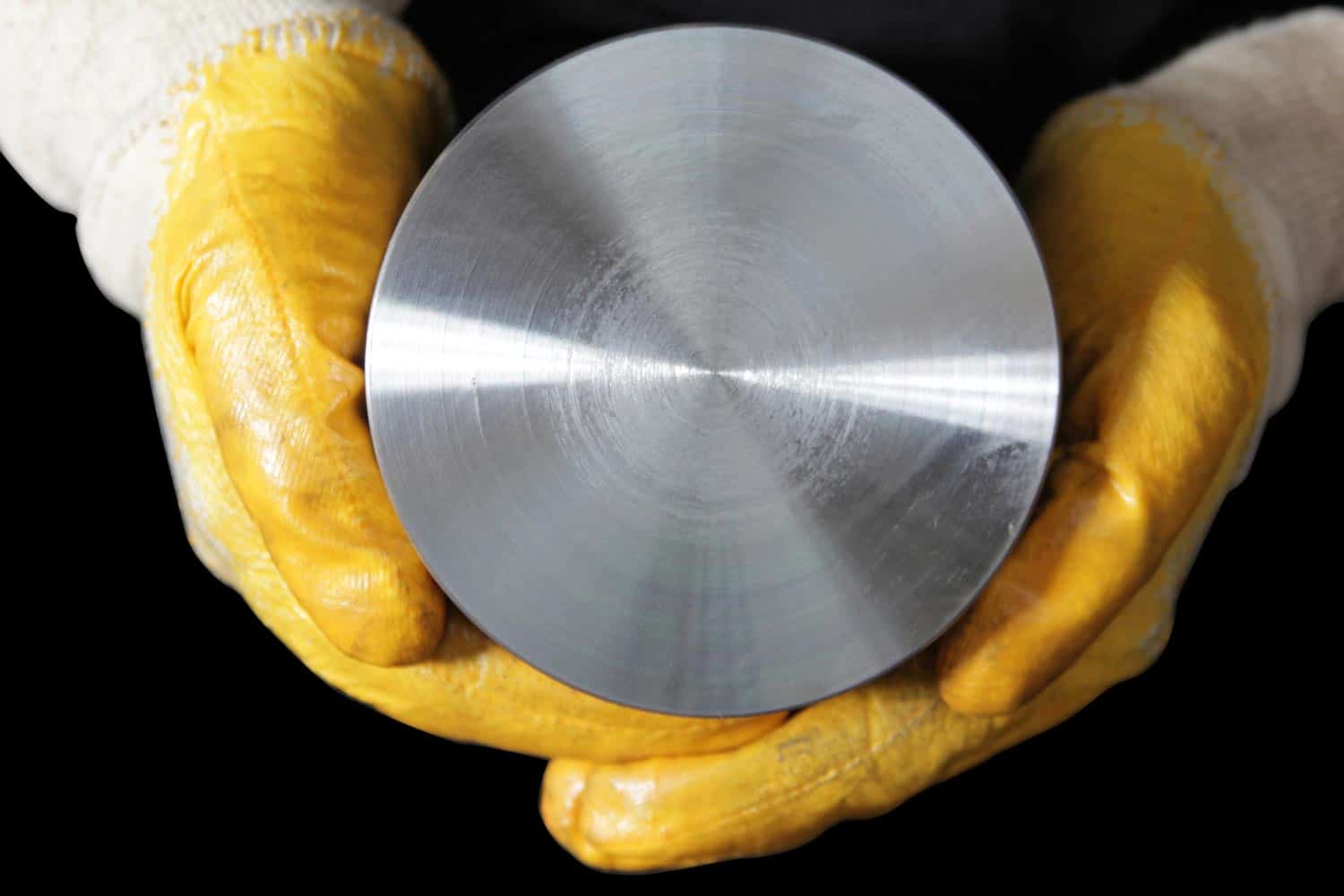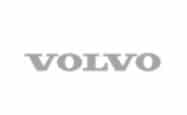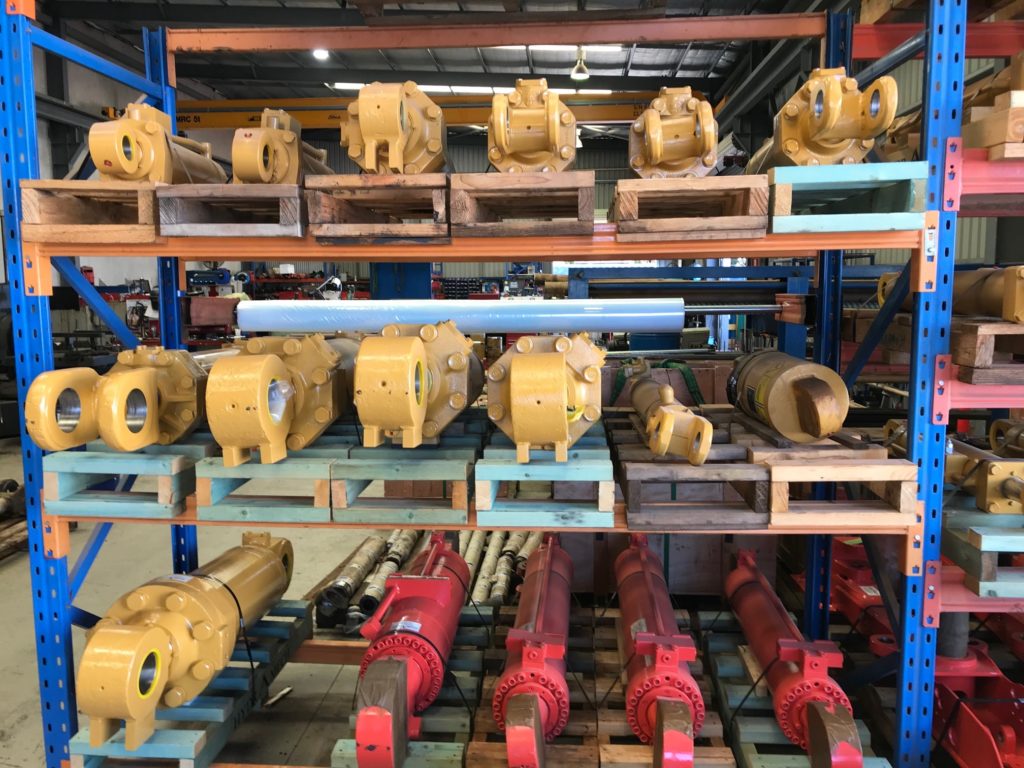Hydraulic systems store fluid under tremendous pressure, typically 2,000 PSI. Not only is the fluid under a huge amount of pressure, it is also hot and toxic.Working on complex hydraulic mining systems can be dangerous and demands strict safety rules.
Here are some general safety guidelines to follow when dealing with high-pressure hydraulic cylinders.
Basic Safety Rules
| Use Safety glasses and protective clothing | Any damage or malfunction should be reported, and tagged before re-use |
| Operating instructions should be studied carefully | Install a manometer or similar for displaying pressure |
| Avoid overloading the system | Keep hands and other body parts away from the working area |
| Changes the oil periodically | Use only clean hydraulic oil |
Installation/Mounting
Cleanliness is an important consideration; cylinders are shipped with the ports plugged to protect them from contaminants entering the ports, and they should not be removed until the piping is to be installed.
Before the piping is installed, it should be thoroughly cleaned to remove any chips or burrs.
Mount cylinders using the largest possible screws that can fit in the cylinder mounting holes.
Hydraulic cylinders mounted in hazardous environmental conditions such as excessive heat or where air drying materials are present such as fast-drying chemicals or paint should have shields installed to prevent damage to the piston rod and piston rod seals.
Proper alignment of the piston rod and mating component should be checked to stop excessive wear.
Handling
Whenever moving or handling your cylinder, care should always be exercised to avoid any damage that may cause a detrimental effect on future performance.
Handle cylinders in a collapsed position to avoid any damage to the machined and polished sealing surfaces. Lift cylinders using a nylon sling instead of a chain which can easily scar or scratch machined and polished surfaces. Cylinder parts can be easily dented with chain hoists.
Don’t lift a cylinder by the pin-eye as this can cause Premature failure due to contamination. Lifting the cylinder by the pin-eye can pull the plunger out and allow foreign material to enter.
Shipping
Shipping best practices must be followed to ensure safe delivery of these finely tuned parts.
It’s critical to use strongskids and containers and band the cylinder properly followed by shrink-wrapping or covering the cylinder with plastic to keep the cylinders dry and clean.
Distributing the weight evenly will help protect your cylinder from excessive movement such as bumping, jostling, and drops during shipment.
By labelling the packaging properly based on the item being shipped and its destination you can save yourself from a large headache later.
Storage
Hydraulic cylinders have finely finished parts and close tolerances, so it’s crucial to handle and store them with care.
Sometimes cylinders are delivered before their scheduled installation and must be stored for a period of time. For situations such as these, we recommend the following guidelines:
Environment
Hydraulic cylinders should be kept in a dry, clean, and noncorrosive environment where they are protected from moisture and temperature extremes.
Heat can quickly dry out sealing materials causing leaks and rapid wear when the cylinder is in service. Cooler temperatures can cause condensation and corrosion damage. It‘s best to store cylinders indoors if possible.
Treatment
Protect hydraulic cylinders from both internal corrosion and external damage with the appropriate treatment methods.
Consider filling the cylinder with clean hydraulic oil to protect the interior surfaces from spot rusting or pitting which occurs when ambient temperature drops causes condensation.Spot rusting and pitting will reduce the volumetric efficiency of the cylinder and the service life of the piston seal.
If a cylinder is filled with clean hydraulic oil, expansion of the fluid and pressurisation due to temperature changes must cut short by installing a check valve.
If cylinders are mounted on equipment stored outside for extended periods, exposed surfaces should be coated with a rust-preventing compound to stop oxidation.If oxidation is already present, apply a light coat of oil to the surfaces and buff surfaces with 320 or 400 grit sandpaper.
If the surfaces show evidence of damage, the cylinder should be inspected as the using it with surface damage present will significantly shorten its service life.
Port Plugs
Be sure that port protector plugs rated for the cylinder’s working pressure are left in until the time of installation to keep out moisture and dirt.
However, avoid overtightening the port plugs as this may cause a buildup of pressure, moving and exposing the piston to corrosion or contamination.
Orientation
Cylinders should be stored vertically and blocked securely to keep them from toppling with the piston rod down. This will achieve a couple of things:
- Minimise corrosion due to condensation which could occur inside the cylinder
- Reduce seal damage by keeping oil on the seals to stop them from drying out
If your hydraulic cylinder must be stored horizontally, it should be rolled into a new position every two months to prevent the seals from drying out, distorting or deteriorating.
Handling
Store the cylinders where they are protected from any improper physical movement or damage, storing cylinder with the rod end discourages attempts to lift a cylinder by the rod eye.
Preventative Maintenance
Seals will wear, and the rate of wear will depend on many operating factors, e.g. wear can be more rapid if a cylinder is misaligned or improperly serviced.
Consequences of failure to maintain or improper maintenance include;
- Piston rod failure
- Piston rod and or attached load is thrown off at high speed
- High-velocity fluid discharge
- The piston rod extending when pressure is applied in the piston retract mode
- An unexpected detachment of the machine member from the piston rod
- Failure of hoses, fittings, valves, pumps, and compressors
- Catastrophic cylinder seal failure leading to sudden loss of pressurised fluid
- Failure of the machine control system
Talk to a professional
Never modify a hydraulic cylinder or an accessory yourself.If cylinders require modifications, they must be done at proper facilities.
Teams can disassemble cylinders to replace seals or seal assemblies, but this work must be done by following all the instructions provided with the seal kits.
Hydramech specialises in mobile mining machinery components including hydraulic cylinder services for underground mining equipment within Kalgoorlie, Western Australia region. Contact us today.





